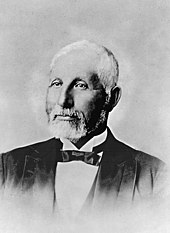
Castro Cove is a "portion of the San Pablo Bay" [1] in Richmond, California located between Point San Pablo and the confluence of Wildcat Creek into Castro Creek. [2]
Overview
The cove is made up of mudflats, bay mud, and intertidal salt marsh owned by Chevron USA. The cove forms an important estuarine environmental resource for San Francisco Bay. [2] It is the home of many endangered species including the Salt Marsh Harvest Mouse, Ridgway's rail, steelhead, and Olympia Oyster. [3] Other benthic invertebrates, mammals, fish, and birds also live in the habitat; all the animals may have been injured by contamination, whether endangered or of least concern. [3] Castro Cove is named after Don Víctor Castro.[ citation needed]
Pollution
The cove is also a recreational, fishing, boating, and shellfishing area. [2] The Richmond Rod & Gun Club Yacht Harbor is located on the western coast of the cove. The Chevron Richmond Refinery located at the south end of the inlet dumps 5.6 million gallons daily of treated industrial use waters into the Cove, Castro Creek and San Pablo Bay. [2] From 1902 until 1987 the refinery released various contaminants in its wastewater and other run-off, which severely contaminated the Bay mud of the cove. [3] In 1998 the California Regional Water Quality Control Board began to plan cleanup of the site and pressured Chevron. The water board used the authority of the Bay Protection and Toxic Clean-up Program to require Chevron to produce a sediment characterization work plan in 1998. [3] Years of discharge or polluted water left the cove with high levels of polycyclic aromatic hydrocarbons (PAHs) and mercury contamination. [3]
Cleanup
This article needs to be updated. (August 2018) |
Between 1999 and 2001 benthic toxicity tests found PAHs and mercury levels at up to 507 mg/kg and 13 mg/kg respectively at this site and a 20-acre (81,000 m2) portion was designated as an area of concern (AOC). [3] The most contaminated, AOC is adjacent to the former wastewater outfall which has been relocated into San Pablo Bay. [3] A California Environmental Quality Act (CEQA)-mandated mitigated negative declaration was completed and a corrective action plan was designed. [3] The plan which includes a natural resource damage assessment will cordon off the AOC with steel sheet piling and have the contaminated muds and sediment dredged and pumped into a disused treatment pond. [3] In that treatment pond the toxic waste will be dried and then neutralized with a stabilizing agent like fly ash or cement. [3] The inactive pond will then be regraded and capped with vegetation. [3] The remediation project is scheduled for the summer of 2007. [3]
References
- ^ "Castro Cove | Hazardous Waste | Damage Assessment, Remediation, and Restoration Program". darrp.noaa.gov. Retrieved 2022-10-22.
- ^ a b c d Monitoring Program Summary Archived 2007-09-28 at the Wayback Machine, California Coastal Water Quality Monitoring Inventory, retrieved August 31, 2007
- ^ a b c d e f g h i j k l Castro Cove/Chevron Richmond, CA Archived 2008-09-17 at the Wayback Machine, National Oceanic and Atmospheric Administration (NOAA), retrieved August 1, 2007